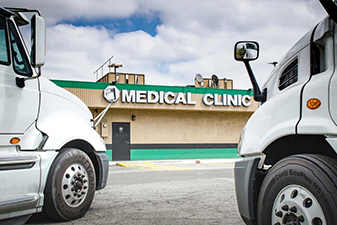|
By Pat Pitz, DAT Solutions
Starting on Jan. 6, a new Federal Motor Carrier Safety Administration regulation will take effect that may help fleets avoid hiring drivers who could be a liability to the company.
It could also reduce the already-tight pool of eligible commercial truck drivers and take a bite out of available capacity for shippers.
The rule will require employers, driver licensing agencies, and law enforcement officials to use the Drug and Alcohol Clearinghouse, an online database run by the federal government, to get the latest information about truck driver drug and alcohol program violations under 49 CFR Part 382,
Subpart B.
Employers will be required to conduct both electronic queries and traditional manual inquiries to make sure drivers and other employees are not prohibited from performing safety-sensitive functions due to an unresolved drug and alcohol program violation—that is, a violation for which the driver has not completed the return-to-duty (RTD) process. This query must be conducted as part of a pre-employment driver investigation, and at least annually for current employees.
Whether you employ truck drivers, are an owner-operator, or you're a company driver, you must meet certain requirements by specific dates. Here's what you need to know:
Motor Carriers
Deadline: Jan. 6, 2020
Requirements: Companies that employ drivers must create a user account in the clearinghouse and begin using the database when hiring a new driver. For the first three years, when hiring a new employee, companies must query the Drug and Alcohol Clearinghouse and conduct a manual inquiry with the applicant's previous employer.
After Jan. 6, 2023, employers can simply query the database and do not have to conduct the manual inquiry. In order to use the clearinghouse, employers must first purchase a Query Plan from the FMCSA. Users can pay a flat fee of $1.25 per query or purchase bundles of queries.
Owner-Operators
Deadline: Jan. 6, 2020
Requirements: Owner-operators are considered both employers and drivers. Therefore, before Jan. 6, owner-operators must create a user account in the clearinghouse and designate a consortium or third-party administrator of their drug and alcohol
|

tests. This administrator will report any violations and enter it into the clearinghouse database. Owner-operators must query themselves at least once per year, and meet all the other requirements of an employer.
Company Driver
Deadline: None
Requirements: Employee drivers are not required to register for the clearinghouse but they will need to register in order to provide electronic consent to either a prospective employer or if their current employer needs to conduct a full query of the driver's record in the clearinghouse. Drivers must also be registered if they want to check their own record in the clearinghouse.
Reducing Risk
Data released last year show that trucking and other safety-sensitive workforces have the highest drug-positive test rates in a decade. The positivity increases are driven primarily by cocaine, methamphetamine, and marijuana. The data also show the four common opioids that the U.S. DOT added in urine testing in 2017 have a higher positivity rate than the two opioids that were previously being tested, codeine and morphine.
While the clearinghouse is designed to help employers reduce the risk of hiring drivers who test positive, it could weed out even more drivers if the FMCSA decides to permit hair follicle testing as an alternative to urine testing. Urine samples can detect drug use in the past few days, but hair follicle testing can detect drugs for up to three months.
For more information about the Drug and Alcohol Clearinghouse, the FMCSA has created a Frequently Asked Questions page with more than 50 questions and answers, and a Learning Center with links to additional resources on the Drug and Alcohol Clearinghouse.
Pat Pitz specializes in carrier and freight broker communications for DAT Solutions, which operates the industry latest electronic marketplace for truckload freight. He is based in Beaverton, Ore.
|



